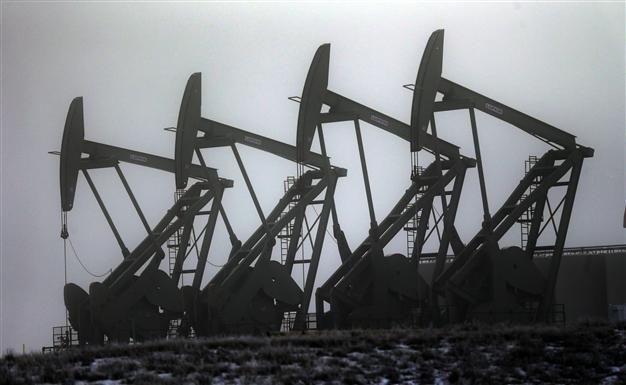Oil demand rises after price drop, but supply strong: IEA
LONDON - Reuters

AP Photo
World oil demand will rise much more than expected this year, the International Energy Agency (IEA) said on June 11, in the latest sign that the collapse in oil prices is helping to boost fuel use.
The Paris-based agency also pointed to “exceptionally high” growth in global supplies, forecasting OPEC crude production would remain near May’s multi-year high and boosting its projection of supplies this year from other producers.
In a monthly report, the IEA raised its forecast for global oil demand growth in 2015 by 280,000 barrels per day (bpd) to 1.40 million bpd, bringing demand this year to almost 94 million bpd.
“Recent oil market strength of course partly stems from unexpectedly strong global oil demand growth,” said the IEA, which advises industrialized nations on energy policy.
Oil prices have recovered this year after hitting a near six-year low close to $45 a barrel in January. Prices collapsed from $115 in June 2014 in a decline that deepened after OPEC refused to prop them up and chose instead to defend market share.
The IEA’s upward revision makes it the most bullish on 2015 oil demand growth of the three government forecasters closely watched by the oil market. The two others - OPEC and the U.S. government’s Energy Information Administration - issued reports earlier this week.
Oil initially rose after the release of the IEA report and later slipped. By 0909 GMT on Thursday, benchmark Brent crude was trading at $65.16 a barrel, down 54 cents.
As well as lower prices, economic recovery and a relatively cold winter helped lift demand in the first half of the year, the IEA said. The supportive impact of these factors could wane in the rest of 2015.
“Recent months have seen a steady acceleration in global oil demand growth, but due to the temporary nature of many of the factors that contributed to the upside, annual growth may subside in the second half of 2015.”
Supply strong as well
The IEA also pointed to strong supply. Production by the Organization of the Petroleum Exporting Countries rose to 31.33 million bpd in May, its highest since August 2012, and is likely to stay high in coming months, the agency said.
“Barring unforeseen outages, OPEC is likely to keep pumping at around 31 million bpd during the coming months as Middle East producers sustain higher rates to preserve market share and meet summer domestic demand,” the agency said.
OPEC, meeting last week for the first time since its landmark decision in November not to prop up prices, kept its output policy unchanged for the second half of the year.
This year’s oil-price jump has been partly driven by signs that lower prices will slow growth in U.S. shale oil and other production with relatively high costs, such as a drop in the number of U.S. drilling rigs operating.
But the IEA does not expect that process to happen overnight. The agency raised its forecast of supply growth from non-OPEC producers this year by 195,000 bpd to 1 million bpd, citing an upward revision to U.S. data and fewer summer maintenance shutdowns in other regions.
“Lower oil prices and a drop in capital spending are taking time to curb non-OPEC supply,” the report said.
“Despite signs of a slowdown in non-OPEC supply, notably in the U.S., global production growth remains exceptionally high.”
With forecasts of demand and non-OPEC supply both being increased; the IEA said the market would require 29.4 million bpd of crude from OPEC and inventories this year, up 100,000 bpd from the previous estimate.
